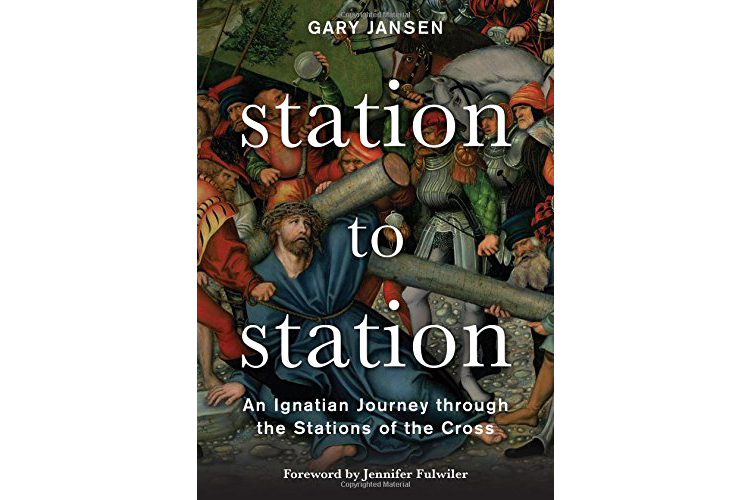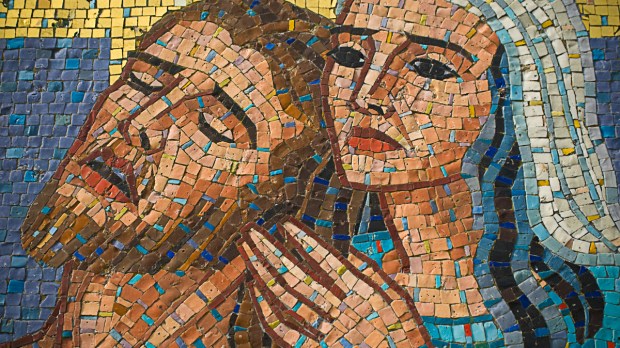Nothing (except perhaps Friday fish fries) characterizes the season of Lent as much as the Stations of the Cross. But despite our familiarity with this Lenten devotion, perhaps we stopped praying it long ago, or still pray it but fail to glean the spiritual fruits we could.
Gary Jansen thinks that using our imagination in the style of St. Ignatius could be a key to improving our meditation on Jesus’ Passion.

In his just-released book, Station to Station, Jansen offers a look at the biblical Via Crucis (Way of the Cross), following the episodes recounted in the Gospels, rather than the traditional 14 stations.
Aleteia asked Jansen to tell us more about how the imagination can help us better pray the Stations and what more we can get from this devotion.
Aleteia: What should be the role of imagination in prayer?
The imagination is extremely important in prayer. You could say that God imagined the world into existence. He imagined the earth and the sky and you and me. Our imagination hence is a gift God has given us to be true co-creators, so that we can imagine a world through him. St. Ignatius taught that the imagination was vital for prayer because it’s a way of expressing our heads and our hearts which are divinely connected to God.
Just imagine for a moment the Sign of the Cross and see how when we intone the Father and the Son we are connecting the head and the heart. You could say that the imagination is the product of that relationship. Specifically, the imagination joins us with Jesus when we use that gift in meditating on something like the Stations of the Cross.
Just try this: Imagine that Jesus has been condemned to death and you are the only one of his friends who holds his hand while he awaits his fate. How does that image make you feel? Maybe you feel nothing. Or maybe this stirs something in you. Whatever you feel, take that experience to God and share it with him. It’s transformative when you do.
Q: Do you think there’s a danger of staying at the level of sentimentality or emotion when we pray the Stations of the Cross?
There are always dangers if we become too extreme in our practices or actions, but in general, I would say no to your question. I think prayer for a lot of us is too heady, too left-brain. Many of us are chatterboxes when we pray because we spend too much time thinking—talking inside our heads. Seminary libraries are filled with billions of words about our faith, but reading about Jesus is different than experiencing Jesus. I can read about jogging but it’s not going to help my heart get stronger if j just read about the topic. I have to actually run and be consistent to see a physical change. The brain thinks. The heart does. And emotions are the seat of the heart. Many of us will often have an almost condescending attitude about the pious old Italian lady who sits in the back of a church crying while she prays the Rosary. But I think she’s the one who gets it. She’s feeling something. Moreover, the Stations of the Cross isn’t a mental exercise, it’s a devotion and devotions are associated with the heart. I say do both. Read, study, discuss. Be a smarty-pants theologically, but when it comes to devotion throw yourself emotionally into it with passion. Those last moments of Jesus’ life are called the Passion for a reason.
Read more: A Sinner’s Stations of the Cross
Q: Did writing this book change you in any way?
It did. Especially in the ways we’ve been discussing. I used to approach the Stations very analytically. Actually, I had very little in the way of a heartfelt connection to them. They were a part of a story that I had read many times and had seen depicted in movies and TV my whole life. I felt like I knew them well and that assumption often leads to boredom (and arrogance). You can be the biggest Star Wars fan, but if you watch the movie a few times every year for 40 years eventually it doesn’t reveal anything new. That’s how I felt with the Stations. I was a big fan of Jesus, but the story left me a little cold.
However, after my grandmother passed away a few years ago I was drawn to the Stations in a new way and in writing about those experiences my prayer life has become more emotionally focused—less left-brain, more right-brain, if you will. I’ve become convinced that the seat of intelligence isn’t in our heads, it’s in our hearts, but those two parts of us are often in a constant struggle for supremacy. I don’t think we need to silence the mind as much as we need to allow our hearts to speak more in our prayers and in life.
Q: As you say, for most of us, the account of Christ’s Passion and the Stations of the Cross are very familiar. What new elements or insights does your book offer?
Station to Station is a profile of human character. My book focuses on the Scriptural Stations of the Cross because I wanted to explore the Bible-based reactions of Jesus to suffering. The Stations actually offer 14 ways of looking at grace under pressure. When Jesus was betrayed what did he do? He didn’t curse anyone. He forgave. When Jesus was beaten, he loved. When he was abandoned by Peter, Jesus accepted his friend’s shortcomings, keeping Peter the Rock of the Church. Jesus’ last dying wish involved his mother and his closest disciple. He thought of others. He thought of us.
Station to Station isn’t a meditation on suffering as much as it is a look at Jesus at his most human; it’s a meditation on the best we can be when we are put to the test.
Gary Jansen is Director of Image Books at Penguin Random House where he has edited books by Pope Francis, Pope Benedict XVI, Bishop Robert Barron and Scott Hahn. He is the author ofThe 15-Minute Prayer Solutionand the best-selling memoir,Holy Ghosts. A popular lecturer and commentator, Jansen has appeared on A&E, the Sundance Channel, the Travel Channel and NPR. His writing has been featured in the Huffington Post and USA Today.

